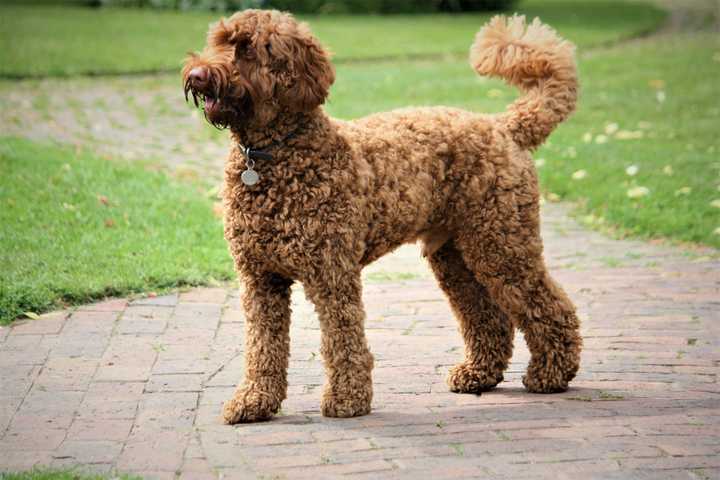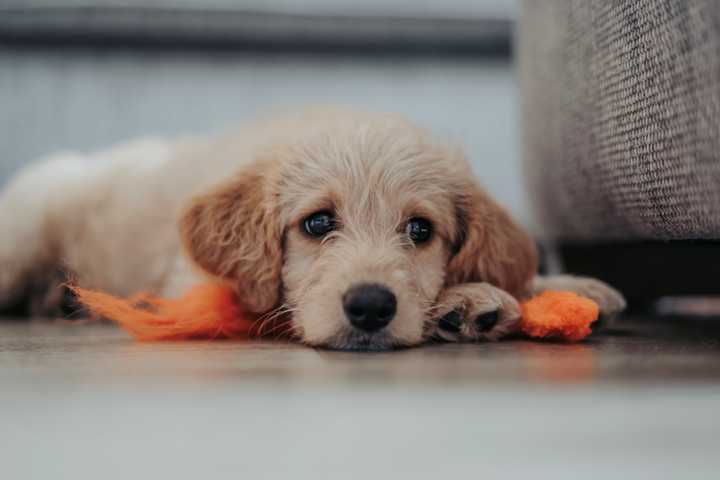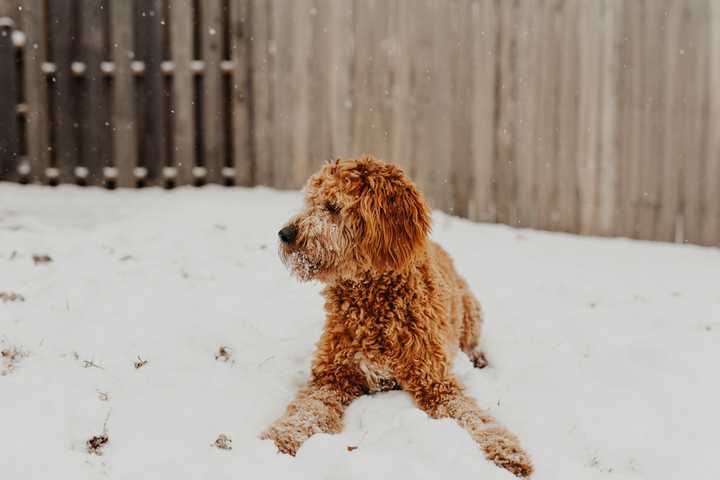With doodles, it's not uncommon for them to miss a bit and get pee on those front paws (especially young male doodles). This is because doodles tend to have longer fur than other dogs, and that stream has a larger surface area to hit, resulting on your dog peeing on itself.
While squatting to pee is more common in female dogs, my 1.5 year old male dog does this all the time. He will pee in a squat when there's nothing structured for him to pee on (this is also called the "puppy squat"). And because of fluffy fur and anatomy, sometimes that pee lands on the paws. Which isn't always a fun experience to clean up.
So if your dog pees their front legs, and you're trying to figure out how to get them to stop, or a shortcut for cleanup and your own sanity, read on.
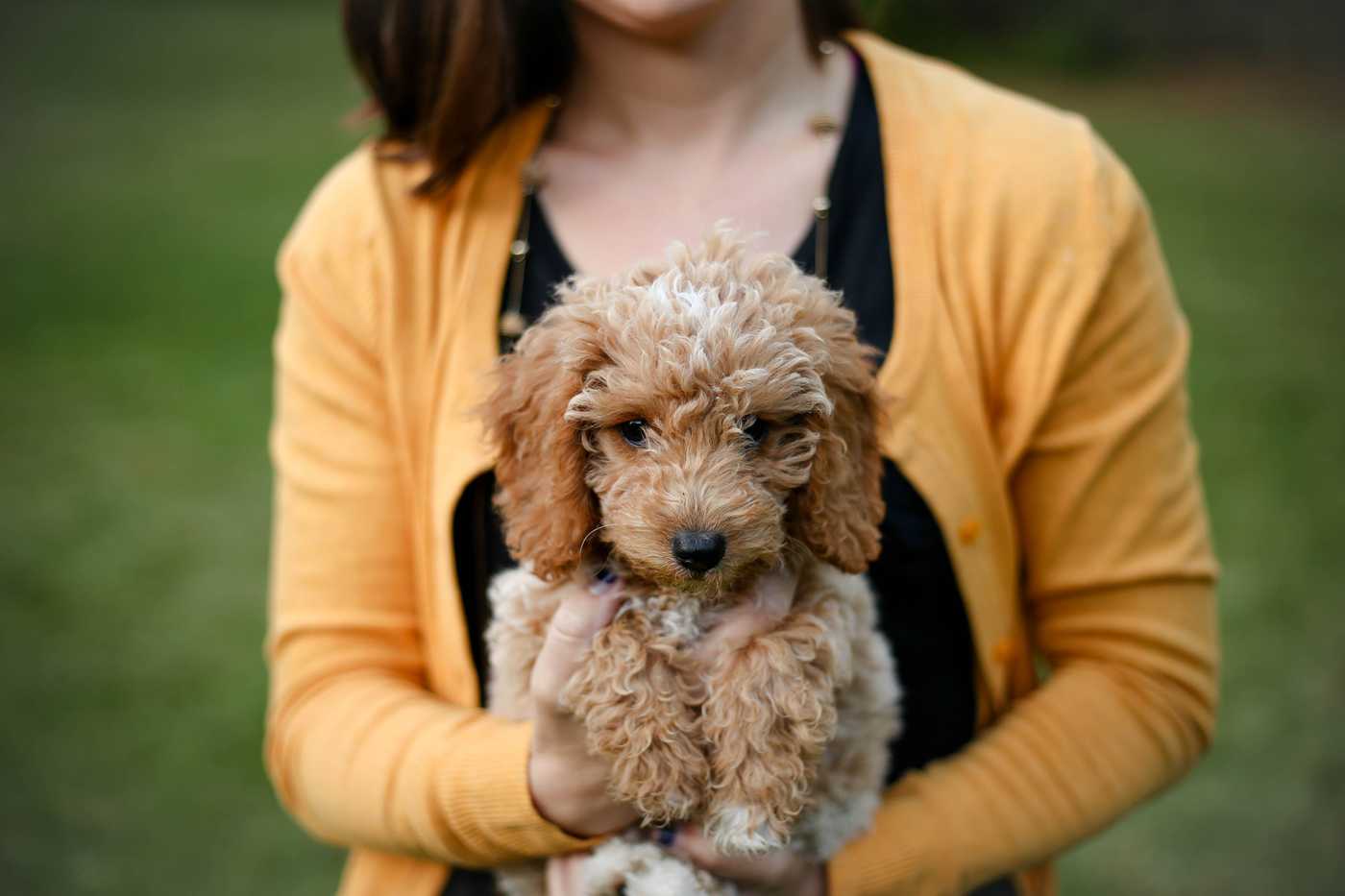
Understanding dog peeing positions
According to pethelpful.com, there are 12 different positions dogs use to pee:
- Stand: The dog is peeing in a standing position.
- Lean: The dog is peeing by leaning forward.
- Raise: The dog is peeing by simply raising the leg.
- Elevate: The typical male posture, the dog is peeing by lifting the leg above the hip.
- Flex: The dog is peeing by flexing the rear legs.
- Squat: The typical female posture, the dog is peeing by squatting down with the legs flexed more.
- Lean raise: The dog is peeing by leaning forward but also lifts the leg.
- Flex-raise: The dog is peeing by raising the leg and flexing it.
- Handstand: The dog is peeing by lifting both rear legs.
- Arch: The dog is peeing by arching the back while the back legs are bent.
- Squat-raise: The dog is peeing by squatting and raising the rear leg.
- Arch-raise: The dog is peeing by arching and raising the leg.
And here's what they look like:
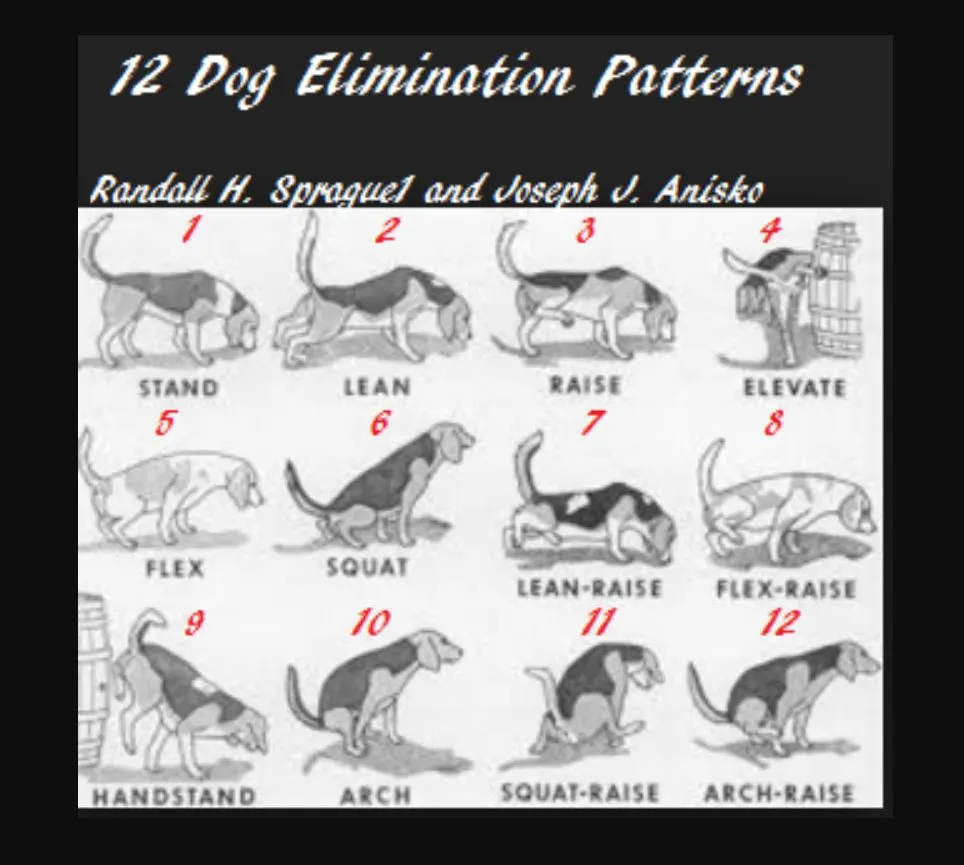 source: pethelpful.com
source: pethelpful.com
Male dogs tend to pee vertically to mark their territory, while female dogs tend to squat. It's not uncommon for male dogs, however, to still pee in a lean, flex, squat, or squat-raise position.
So with all of these various pee positions, how do we get them to stop peeing on the front paws?
1. Help them position properly
If you have a male dog who does some form of squatting when they pee (especially for puppies), you can help them get into position. This is particularly useful if your dog is lifting a little but not quiet getting there, and thus urinating on his front paw.
As they start to pick their leg up to urinate, simply use your foot to help push their rear leg into a higher position. This should get their enitire body into formation to send the stream to the side and not forward.
2. Keep the hair at the end of their privates a bit longer (for males)
This sounds a little weird, but this is a common recommendation from various different sources! Try asking your groomer to leave 3/4-1" of fur left on your male dog's pecker (some call this a "dick wick") to force the stream downward instead of forward. This doesn't always work 100% of the time, but can certainly help!
If you do this, be sure to keep it clean down there. Excess hair could potentially cause bacteria to form. Wipe regularly with wash cloths or a wet towel!
3. DIY raincoat
This post was shared on a Facebook Doodle group I am in (Goldendoodle Dog Owners Group), and I loved this idea so much! Sabrina Mayfield shared how she used plastic bags and hair ties to prevent pee paw after a fresh groom, captioning: "Not today Satan. No pee-paw today. Just had a bath.":
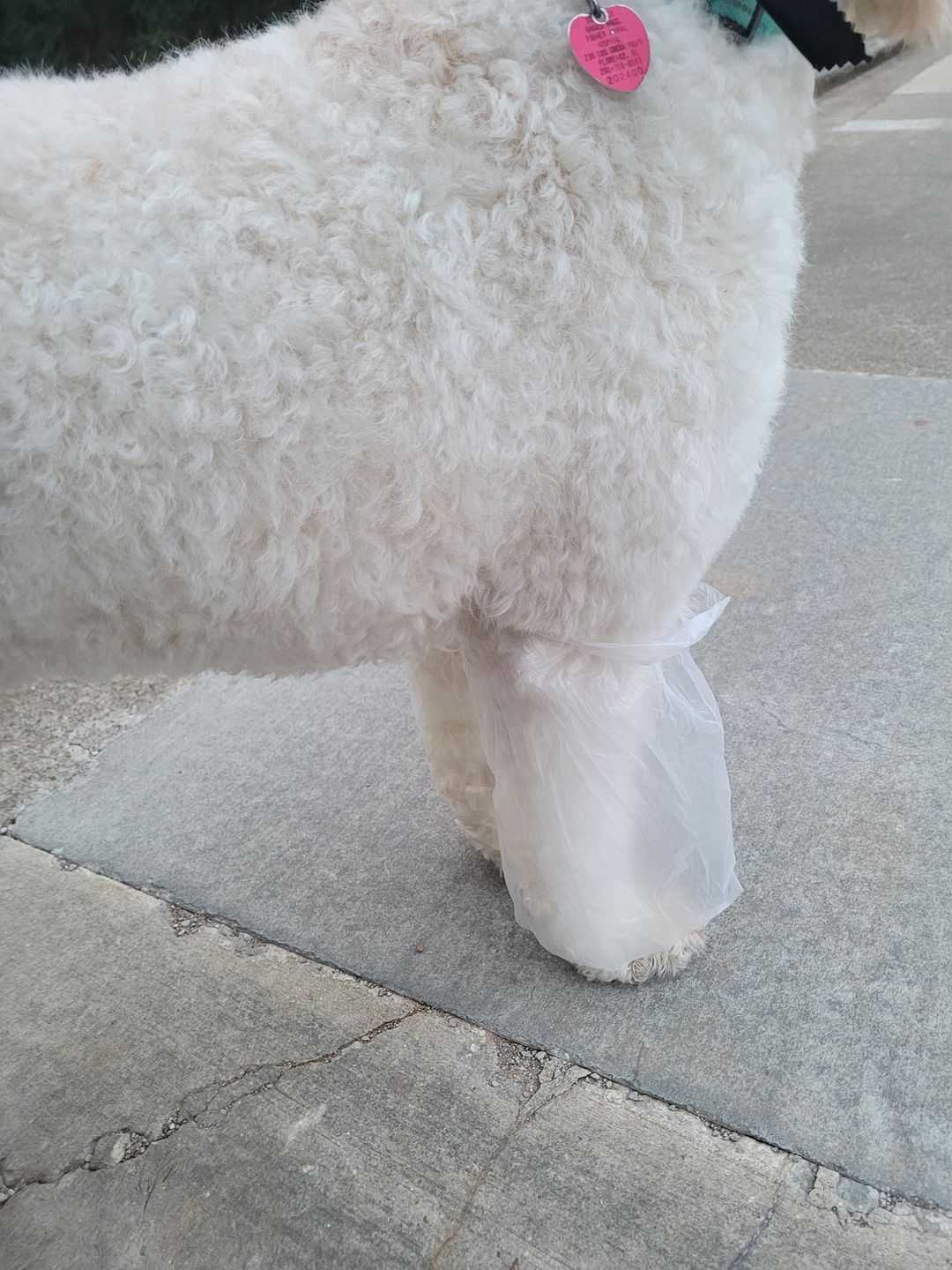 "Not today Satan. No pee-paw today. Just had a bath." Image from Sabrina Mayfield
"Not today Satan. No pee-paw today. Just had a bath." Image from Sabrina Mayfield
4. Make cleanup easier
A little tip we've discovered: wipes don't really work for urine on paws because they don't really get it all out, and a wet washcloth doesn't really either. The doodle fur is no match for those! It loves to retain scents. The only thing that we've found to really help is either a full paw wash in the bath or using a partial wash like the mud blaster.
So, when the inevitable does happen, you can make cleanup a little bit easier with this paw cleaner. It's called the "Mud Buster" but it does more than just busting mud. We use this all the time on our own pup. My favorite part is how easy it is to clean (the inside comes out for easy cleaning).
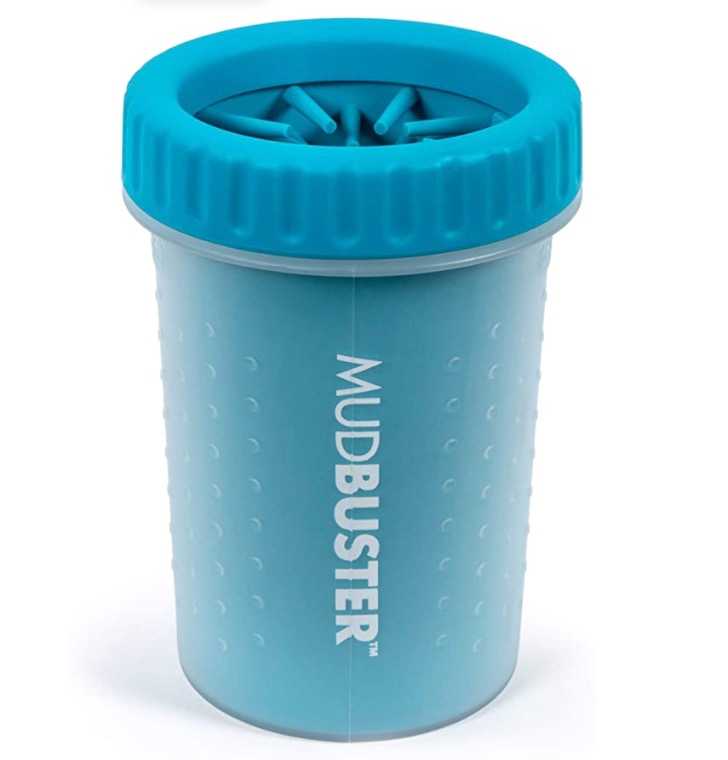
Good luck!
